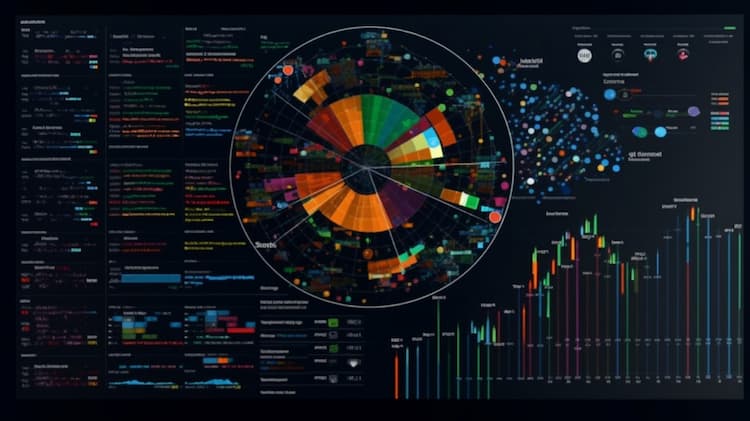IWC ISSUER
The iShares Micro-Cap ETF (IWC) is managed by BlackRock Fund Advisors (BFA) and seeks to track the performance of the Russell Microcap Index. Established to measure the microcap sector of the U.S. equity market, the Underlying Index includes equity securities from issuers with total market capitalizations ranging from approximately $4 million to $4.6 billion, covering the 1,000 smallest issuers in the Russell 3000 Index plus the next 1,000 smallest issuers. As of March 31, 2023, the Underlying Index features a significant presence of financial and healthcare companies. BFA employs an indexing strategy to manage the fund, striving to keep portfolio turnover low, reduce costs, and achieve performance similar to the Underlying Index. The fund generally invests at least 80% of its assets in the component securities of the Underlying Index and may also use certain futures, options, and swaps for its investment strategy.
IWC DIVIDEND
The iShares Micro-Cap ETF (IWC) primarily seeks to track the investment results of the Russell Microcap Index, focusing on the microcap sector of the U.S. equity market. While dividends may not be the primary objective of this ETF, it reflects the dividend distribution of the underlying index. Dividend distributions typically follow the individual dividend policies and performances of the constituent companies within the index. As the Russell Microcap Index includes micro-sized companies, investors considering IWC may expect potential capital appreciation alongside dividend returns, subject to the underlying companies' dividend practices.
IWC TRACKING
Tracking the Russell Microcap Index is the primary objective of the iShares Russell Microcap ETF (IWC). This ETF is designed to mirror the performance of the microcap sector of the U.S. equity market, as defined by FTSE Russell. The Russell Microcap Index comprises approximately 1,000 of the smallest issuers in the Russell 3000 Index, along with the next 1,000 smallest issuers in the equity universe, as determined by Russell. As of March 31, 2023, the index is weighted towards financials and healthcare industries or sectors. IWC adopts an indexing approach, aiming to match the index's performance while maintaining low portfolio turnover and seeking cost-efficiency. The ETF typically invests at least 80% of its assets in the component securities of the Underlying Index and may use representative sampling to achieve its investment objective. It also has the option to invest up to 20% of its assets in various instruments, including futures, options, swap contracts, and securities not included in the Underlying Index, to aid in tracking the index. Additionally, the Fund may lend securities representing up to one-third of its total assets. Russell sponsors the Underlying Index, which is independent of the Fund and BFA. The ETF follows an industry concentration policy similar to the index's, avoiding the over-concentration of assets in any particular industry or group of industries.
IWC CORRELATION
The correlation aspect of the iShares Russell Microcap ETF (IWC) is a significant factor in understanding its performance within the microcap sector of the U.S. equity market. Given that IWC tracks the Russell Microcap Index, it typically exhibits a high correlation with microcap stocks. Investors often use IWC to gain exposure to the microcap segment and potentially benefit from its growth potential and risk characteristics. By studying IWC's correlations with other asset classes and sectors, investors can make informed decisions about incorporating microcaps into their investment portfolios.
IWC SECTOR
The iShares Micro-Cap ETF (IWC) primarily focuses on the microcap sector of the U.S. equity market. This ETF tracks the Russell Microcap Index, which includes the 1,000 smallest issuers in the Russell 3000 Index, as well as the next 1,000 smallest issuers. As of March 31, 2023, a significant portion of the index is represented by securities of companies in the financials and healthcare industries. IWC aims to provide investors with exposure to the potential growth and opportunities offered by microcap companies while maintaining a diversified portfolio approach. However, it's important to note that microcap stocks can be more volatile and carry higher risks compared to larger-cap stocks.
IWC EXPOSURE
The iShares Micro-Cap ETF (IWC) offers exposure to the microcap sector of the U.S. equity market, as defined by the Russell Microcap Index. This ETF provides investors with access to a unique segment of the market, consisting of companies with market capitalizations ranging from approximately $4 million to $4.6 billion. As of March 31, 2023, the portfolio is predominantly composed of securities from the financials and healthcare industries, reflecting the index''s characteristics. IWC employs an indexing approach, aiming to closely track the performance of its underlying index, which allows for lower costs and reduced risks associated with active management. For investors seeking exposure to the microcap sector, IWC offers a convenient and efficient investment option.



